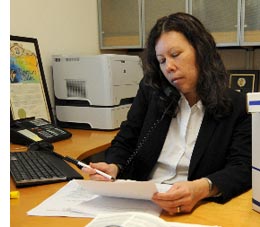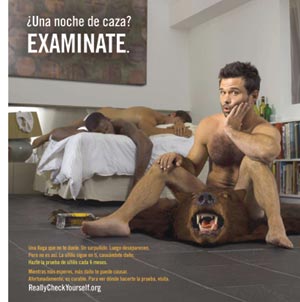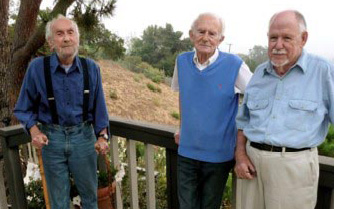Investigating child deaths–and the system
October 19, 2009
Rose Belda hit the ground floor running.
Working from a basement office in the Hall of Administration, the newly hired chief of the Children’s Special Investigations Unit already had been directed by the Board of Supervisors to examine the deaths of 36 children. With no staff yet, she was doing her own photocopying of case files.
 Belda nodded towards a six-inch stack of confidential files she’d just run off about Lazhanae S., a 13-year-old charge of the Department of Children and Family Services who, in March, was stabbed to death in South L.A. after bolting from a DCFS-monitored foster home. “Here’s my reading for tonight,” Belda said.
Belda nodded towards a six-inch stack of confidential files she’d just run off about Lazhanae S., a 13-year-old charge of the Department of Children and Family Services who, in March, was stabbed to death in South L.A. after bolting from a DCFS-monitored foster home. “Here’s my reading for tonight,” Belda said.
Her workload won’t lighten anytime soon.
The board hired Belda in September as the unit’s lead attorney to investigate deaths and other “critical incidents” of abuse or neglect of children known to have had contact with the Department of Children and Family Services. She’ll advise the supervisors about needed improvements, offering advice about what works and what doesn’t.
Belda will also examine issues of accountability within children’s services, including whether appropriate disciplinary action was taken, as well as whether problems exist within the overlapping responsibilities of various county departments, including DCFS, probation, mental health and health services.
“Some of the system issues that need to be fixed are huge,” she says of her mandate. “They are not going to be fixed by small changes in policy – by adding a word here or there. I wish it were that easy.”
No doubt, Belda’s own work will be under the microscope, too. She begins her job after several high-profile deaths—and numerous critical news stories—have raised troubling questions about county services to kids in trouble.
In July, Dae’von B., 6, was found beaten to death after the boy had complained of abuse to teachers, health care staffers and social workers. His mother’s ex-boyfriend has been charged in the case. In that same month, preschooler Lars S. of Highland Park was decapitated by his mother, who killed herself, just months after county investigators looking into the mom’s mental health declined to remove the boy from her care. And two months later, In August, 19-month-old Jasmine G. died under mysterious circumstances while in county-supervised foster care.
Belda, 49, believes her experience as County Counsel’s legal advisor to DCFS since 2001 will give her an edge in investigating such tragedies. “Being an insider, I’m not coming in cold,” says Belda.
Belda says that, during her early years with the county representing the interests of children in dependency court, she saw up close the harm that can come to youngsters caught up in the system.
“I have a strong recall of a lot the cases that came in when the kids were really hurt,” says Belda. “In other [county] departments, when someone is asleep at the wheel, people don’t die. This is an area where the impact is so immediate and so quick and so swift. The kids can really get hurt…They need good people to step up for them.”
The mother of two teens, Belda lives in Hollywood with her husband, Superior Court Judge Victor Greenberg, who once held a similar post in the 1990s investigating child deaths as an inspector general in the Auditor Controller’s office.
The new post, which pays $193,000 annually, reports directly to the board.
DCFS Director Trish Ploehn called Belda an “excellent selection” and says she doesn’t believe Belda’s direct line to the supervisors will make adversaries out of her investigative unit and DCFS. “Hopefully,” Ploehn says, “the aim of my department, the board and the CSIU are all the same—find out what has gone wrong in tragic cases and find ways to fix the problems.”
Belda, asked whether she’s experienced any obstacles in her investigations so far, made a politic bow toward the cooperation she’s getting from DCFS and other departments.
“I haven’t found any big impediments,” she says. “All of the county departments have been helpful even when they know that I’m sort of targeting them. People have been, if not thrilled, super polite and super responsive. That’s a real positive.”
Project 50: watch us grow
October 15, 2009
Call it “Project 250.”
Spurred by the success of Project 50, the paradigm-busting homeless program targeting Skid Row’s most vulnerable residents, Supervisor Zev Yaroslavsky earlier this year proposed a countywide expansion he dubbed Project 500. But when the full Board of Supervisors asked the Auditor Controller to further study the program’s benefits before committing, many observers guessed that the expansion was on hold.
Not exactly.
Without fanfare, similar county-approved homelessness projects in three Third District communities are already well underway, working to house 130 in Santa Monica, 40 in Venice and 30 more in Van Nuys. Together with the initial 50 clients in downtown L.A., you might say Project 500 is halfway home.
The newer projects follow similar protocols pioneered in downtown Los Angeles by Project 50, an innovative initiative shepherded through the board by Yaroslavsky that is now in its second year.
Outreach workers identify the most at-risk homeless based on a “vulnerability index” created by New York City-based homeless advocates Common Ground. The index assesses such factors as recent hospitalizations, arrests, addiction issues and length of homelessness. Those in gravest danger of death are placed in permanent supportive housing, surrounded with health and mental health services, along with substance abuse treatment, that can revitalize lives and save taxpayer’s money in reduced jail time, hospital stays and emergency room visits.
During its first year, Project 50 reported encouraging results (see Power Point here). Among other things, those results suggested that the chronically homeless are not “service-resistant” and want to move into housing. Eighty-eight percent of the men and women recruited at the beginning of the program remained in housing at the end of the year, despite the fact that they’d averaged nearly 10 full years living on the streets before signing up. Thirty seven of the 39 in the group diagnosed with mental illness were receiving treatment, and 61 percent of the substance abusers had entered counseling.
Preliminary cost data showed substantial savings, too. Hospital and emergency room visits plunged for the group compared to the previous year, as did jail time, saving taxpayers more than $500,000, according to preliminary figures. Project 50 has been allocated $3.6 million in county funding.
The new programs:
Venice: St. Joseph Center of Venice, which identified the community’s most vulnerable homeless individuals during a three-night survey in May, has signed up 28 of the 40 clients it hopes to house in its two-year program, according to Va Lecia Adams, the center’s executive director. One of those is Gigi Davis, 51, a Marine Corps vet who has been sleeping on the streets near the Venice post office and says she is bipolar and has a drinking problem. Now taking psychiatric medications, she says she is grateful “for the improvement in my day to day life that I’m already seeing.”
Santa Monica: Five providers are combining to house 130 of the area’s most vulnerable homeless people, first identified in a survey nearly two years ago. The Ocean Park Community Center is serving 40 individuals, and Step Up on Second is working with 30. The other clients are working with the Clare Foundation, St. Joseph Center and the Veterans Administration. Tod Lipka, Step Up on Second’s CEO, noted that a recent homeless census showed a first-ever drop in this population, boosting confidence that homelessness can be successfully attacked. Such programs, Lipka, says go “a long way to address the problems of homelessness.”
Van Nuys: Following a homeless survey in May in Van Nuys, the San Fernando Valley Community Mental Health Center will be combining services for 30 clients over the next year. Program director Anita Kaplan says 13 clients have been enrolled and will get Section 8 housing vouchers as they become available. “This fast-track into permanent housing is definitely unique,” says Kaplan. “I do see a lot of successes.”
Read L.A. Times columnist Steve Lopez’s take on Project 50.
Posted 10/15/09
Thanks for not sharing
October 15, 2009
Jorge Montoya knew he was no longer in the private sector, brainstorming marketing strategies with the likes of Fox, Paramount and Yahoo.
Hired in 2002 by L.A. County’s Public Health Department to help run its sexually transmitted diseases program, Montoya says he found himself surrounded by nurses and doctors who looked at him “like a crazy man” as he preached the gospel of product branding, social marketing and behavioral research.
Montoya says his new government colleagues simply hadn’t been exposed to the kind of cutting-edge techniques that the county would need to crash through the media clutter and reach its targeted audiences.
“We’ve come along way,” he says. “There’s been a lot of learning.”
Today, those seemingly exotic marketing methods infuse every aspect of the county’s multi-faceted campaign to reduce the region’s high rate of STDs, especially among the high-risk populations of gay men and young women of color. By all accounts, the county’s effort has emerged as one of most innovative and far-reaching in the nation.
 The newest addition to the campaign— www. dontthinkknow.org, a website where women can confidentially order home test kits for chlamydia and gonorrhea—already is producing promising results, potentially saving women from infertility and other long term health affects associated with untreated STDs.
The newest addition to the campaign— www. dontthinkknow.org, a website where women can confidentially order home test kits for chlamydia and gonorrhea—already is producing promising results, potentially saving women from infertility and other long term health affects associated with untreated STDs.
In the first three months after the site’s June launch, nearly 2,000 kits were requested, with about half of them returned to the county for testing. Of those, health officials say, about nine percent came back positive for chlamydia and/or gonorrhea. Nearly 90 percent of the infected women, Montoya says, have sought treatment—a good number, he says, but not good enough. “We want 100 percent and we won’t rest until we get there,” he vows.
Under the direction of the Board of Supervisors, the Public Health Department revamped and intensified its STD prevention program in late 2006, as infections in the county ranked among the highest in the U.S. Particularly alarming was the fact that syphilis, after leveling off for several years, had started soaring again.
Dr. Peter Kerndt, director of public health’s STD program and Montoya’s boss, says that the success of HIV medications had brought an unintended consequence. “There were a whole lot of gay men who were feeling good and they returned to some of the same old risky behaviors,” Kerndt says. “They were getting syphilis and gonorrhea and chlamydia and infecting others.”
This was especially worrisome, he says, because those infected with syphilis are up to five times more likely to pass the HIV virus to partners.
To turn the tide, two distinct campaigns were created through a contract with Fraser Communications, a Los Angeles advertising and marketing firm that handles a mix of public and private sector clients.
 One campaign, called “I Know,” is targeted at young black and Latina women, who have disproportionately high rates of chlamydia and gonorrhea. The other, dubbed “Check Yourself,” urges gay and bisexual men to get tested for syphilis. In both cases, the idea behind the marketing strategy was to create a sense among the targeted audiences that “whoever is talking to me understands my emotions and my drives,” according to Fraser account director Dean Stephens.
One campaign, called “I Know,” is targeted at young black and Latina women, who have disproportionately high rates of chlamydia and gonorrhea. The other, dubbed “Check Yourself,” urges gay and bisexual men to get tested for syphilis. In both cases, the idea behind the marketing strategy was to create a sense among the targeted audiences that “whoever is talking to me understands my emotions and my drives,” according to Fraser account director Dean Stephens.
Supervisor Zev Yaroslavsky provided a crucial infusion of $700,000 from Third District funds to underwrite the inaugural media efforts of the two campaigns. He would later provide an equal amount for both the second and third years.
Among other things, the money paid for a social marketing campaign that has included ads in magazines and on billboards, bus shelters and niche websites. Tens of thousands of posters and postcards have been placed in South L.A. hair and nail salons as part of the “I Know” campaign. The “Check Yourself” effort has included advertising slides in movie theaters and the distribution of more than 100,000 coffee cup sleeves and 76,000 bar coasters in West Hollywood and other targeted neighborhoods.
Outreach teams, meanwhile, have taken to the streets in communities with the highest infection rates, handing out thousands of “palm cards,” as well as lip balm and condom key chains paid for by the non-profit California Family Health Council.
As a result, Montoya says, there has been a “significant association” between women who’ve been exposed to the “I Know” campaign and those who’ve sought testing and treatment. As for the men, they’re more problematic. “They’re easier to reach,” Montoya says, “but harder to motivate.”
Gay men have been bombarded with so many health messages for so long that they’ve become fatigued and desensitized to them, he says.
 So the county’s approach for the “Check Yourself” campaign was to come up with clever, provocative images with new kinds of messages to hopefully inspire men to act. As Fraser account director Stephens put it: “We purposely decided we would not be shy. You can’t deny that people do respond to sexually charged ads.”
So the county’s approach for the “Check Yourself” campaign was to come up with clever, provocative images with new kinds of messages to hopefully inspire men to act. As Fraser account director Stephens put it: “We purposely decided we would not be shy. You can’t deny that people do respond to sexually charged ads.”
The latest round of print ads, which were tested with focus groups, are certainly risqué by government norms. They show men, barely covered, in a series of witty morning-after scenarios, including one in which a man is wearing only an inflatable rubber duck around his hips as he tip-toes across a pool deck. In the background, several nude men are sleepily sprawled across lounges. The headline: “Check Yourself: You can’t escape the night before.”
Fraser’s research shows that, despite an extremely competitive landscape, the ads have grabbed the attention of more than 80 percent of gay men surveyed by the firm. Fraser and the county are now evaluating whether that awareness has translated into more tests.
“Can we change behavior?” asks Montoya. “That’s the challenge.”
Are you in line for a property tax cut?
October 14, 2009
Property tax bills going out in October will have good news for some beleaguered L.A. County homeowners.

Thanks to a proactive review by Los Angeles County Assessor Rick Auerbach of 473,000 homes and condominiums, property taxes were lowered on some 333,000 of them.
By visiting the County Assessor website, and entering a street address or Assessor Identification Number, owners can quickly learn whether they’re on the list, which primarily covers residences bought between July 1, 2003 and June 30, 2008, but also included homes in certain hard-hit pockets of the County going back as far as 2000.
The homes picked for proactive review came in neighborhoods where the run up and subsequent collapse in housing prices was particularly extreme. The average reduction in value for single family homes was $126,000, which means a property tax savings of around $1,400. For condos, the value drop was about $96,000 and the tax savings this year was approximately $1,100. The free review meant that these taxpayers would get the benefits of a reassessment.
Homeowners whose properties were reassessed should have received notification over the summer. Homeowners who think the new valuation is still not accurate should contact the nearest Assessor’s district office to discuss the results. If need be, they should consider filing an appeal with the Assessment Appeals Board by November 30, 2009.
Residential and commercial owners whose properties were not reassessed but who believe their property’s assessed value was too high should consider downloading and filing the one-page Decline in Value application. Or they can call the Public Service Information line at 213-974-3211, or toll-free, at 888-807-2111. When home prices dropped so quickly and comparables not always reliable, the Assessor urges property owners to contact them. “If property owners do have more up to date information, they need to contact us,” says John Noguez, special assistant to the Assessor. “Assessor Auerbach continues to be very proactive to help property owners.”
Malibu octogenarians get their goats—and safer homes
October 14, 2009
Just what was that herd of goats doing munching grass on the steep hillsides of Malibu’s Horizon Hills earlier this year? They were hired hooves.
Venturing easily to slopes too vertical for weed-whacking men to climb, the sure-footed grass-eaters were hired as part of a fire grant program engineered by an unlikely trio of retired 80-something neighbors in Horizon Hills. The men were determined to reduce the danger of a wind-driven brush fire devastating their 40-home neighborhood, tucked into the Santa Monica Mountains.The retirees—an Auschwitz survivor, a former Luftwaffe private and a World War II Army paratrooper—formed a “fire safe council,” a volunteer non-profit group dedicated to improving local fire readiness. They won nearly $120,000 in federal and state grants, using the funds to cut trees, trim bushes and even attack acres of grass with the voracious goats.
They set up their Horizon Hills group under the umbrella of the California Fire Safe Council, a clearinghouse for fire education and state and federal grants. Los Angeles County has 25 similar local organizations, according to L.A. County Fire Department Forester J. Lopez, who worked closely with the men in the Horizon Hills unit. “This is a great way to empower neighbors to solve their own fire issues,” says Lopez, who also serves as vice chair of the statewide group’s board.
The fire-conscious octogenarians made improbable allies.As a teen and Polish Jew, Herb Kolischer, now 85, had survived more than two years at Auschwitz before immigrating to California and launching a career as an architect.
Physicist Wolfgang Knauer, 83, twice conscripted in the German air force as a teen, worked for decades as a scientist at the Hughes Research Center. Knauer and Kolischer first became acquainted decades ago at neighborhood meetings. After initial wariness, Knauer says of their different backgrounds, “we put the past into the distant past.” They’ve been friends and ski buddies ever since.
The two men got on the fire safety bandwagon thanks to a third friend, Dr. Ernest Masler, 86. The retired psychiatrist, a U.S. Army paratrooper in World War II, became a fire crusader after his old Malibu residence burned down in the 1993 Topanga fire and he moved to Horizon Hills. Masler had spent a few years in a fruitless letter writing campaign urging federal land officials to reduce fire danger with controlled burns in the brushy federal parklands that surround the neighborhood on three sides.
Frustrated, the men decided that if they couldn’t change federal burn policies, they could effect change closer to home by reducing the danger of fires in their own neighborhood.
They formed the Horizon Hills fire safety council in 2005 and soon won a $52,000 grant to hire a tree trimming firm to reduce hazards near homes. “It’s relatively simple to set up, but you have to be persistent,” says Kolischer.
They were certainly persistent with their Horizon Hills neighbors, making house-to-house visits in an effort to persuade them to let tree trimmers lop off branches and remove whole trees. Their secret weapon was the Fire Department’s Lopez, a forester who provided technical expertise and proved a very good negotiator to boot, the men say.
“We did everything we could to persuade some neighbors we weren’t terrorists” for wanting to cut down their beloved trees, jokes Masler. In time, the trio won over most of their neighbors, a task made somewhat easier by the fact that the work would be paid for by the grants.
A $15,000 state grant helped bring in the grass-eating goats. The council won a second federal grant of $52,000 to cut back chaparral and more trees in 2008 and early 2009. The box score: 100 trees were cut down, another 100 were pruned and 15 acres of grass and brush were trimmed.
“We improved the situation a great deal,” says Knauer, “but there is more we need to do.”
No butts about it
October 1, 2009
 It’s official: If you’ve got ‘em, don’t smoke ‘em. That’s now the law in Los Angeles County’s public parks and golf courses.
It’s official: If you’ve got ‘em, don’t smoke ‘em. That’s now the law in Los Angeles County’s public parks and golf courses.
With evidence mounting about the dangers of secondhand smoke, county officials have banned smoking at more than 125 county parks and facilities, including the Hollywood Bowl and the Ford Amphitheatre, and sharply restricted it in the nation’s largest municipal golf course system.
The county joins numerous other California cities and counties in imposing smoking restrictions in parks that are tougher than state law.
“Ninety-five percent of our facilities are now smoke-free from curb to curb,” says Mika Yamamoto, Unincorporated Areas Liaison in the executive officer of the Department of Parks and Recreation.
Now parks officials are working on making signs and informing staffers, volunteers and sports league representatives about the new policy. They also are setting up meetings with concessionaires about establishing designated smoking areas.
The move to ban smoking in Los Angeles County’s parks was initiated last year in a motion by Supervisor Yaroslavsky and approved by the board. The motion asked the directors of the public health and parks and recreation departments to study the health and fiscal implications of a proposed smoking ban and to report back.
Their report recommended an outright ban on smoking at all local community and regional parks, arboretum and botanic gardens, equestrian centers, natural areas and sanctuaries.
But the recommendations stopped short of calling for an end to smoking at the county’s 19 golf courses. Operators of municipal golf courses throughout the region contended that such a ban could lead to fewer visitors and thus be economically harmful. The report recommended instead that smoking be prohibited in areas where people congregate, including driving ranges and practice areas such as putting and pitching greens. The ordinance went into effect Oct. 22.
The parks department is expecting a positive response to the ban—even from smokers.
“We believe that most often people will say, ‘Oh I didn’t know’ or ‘Thanks for letting me know.’ We’re anticipating getting a lot of cooperation,” Yamamoto says. “Most people want to do the right thing.”
The latest effort to protect the public from the demonstrably harmful effects of secondhand smoke is the logical next-step to a county policy adopted in 2004 that banned smoking at beaches.
“The creation and adoption of a smoke-free policy in county parks,” Yaroslavsky said in his motion, “is another important step towards improving the health of our children and families.”
Zev declares health care a human right, 9/04/09
September 23, 2009

Los Angeles County Supervisor Zev Yaroslavsky challenges us and our congressional delegation to “go to the mountain” for health care just as we’ve done for education and voting rights, which he declares a fundamental human right. Video clip is one of a series of the Sept. 3, 2009 Organizing for America event shot by Doug Drenkow, reporting for OpEdNews.
Zev at Measure R victory press conference, 11/05/08
September 22, 2009

In November 2008, Measure R was approved by an amazing two-thirds majority, committing a projected $40 billion to traffic relief and transportation upgrades. The passage of Measure R was a strong sign from L.A.’s voters that they wanted to change the tenor of mobility in their region and radically improve public transportation.
Zev’s audio
July 23, 2009




















 Check for the latest closure information
Check for the latest closure information








